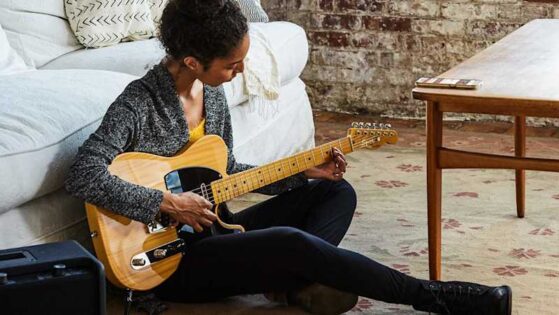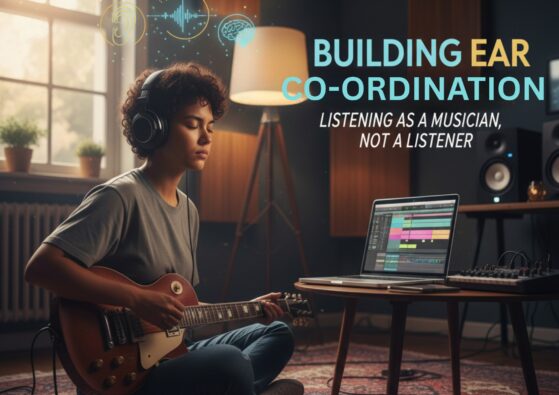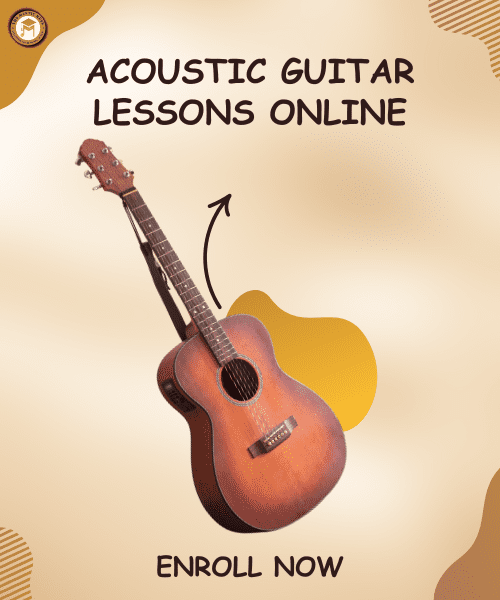Guitar Soloing Made Easy | How to Start Playing Lead Guitar
The first time you hear a guitar solo that truly moves you, it’s almost like the world stops for a moment. Maybe it’s a wailing, emotional bend that seems to cry out over the music. Maybe it’s a smooth, flowing melody that makes you close your eyes and just listen. Or maybe it’s a blistering run of notes that sends a rush of energy straight through you. These moments remind us why we pick up the guitar in the first place—because music has the power to connect deeply with the heart. The good news is, creating moments like these doesn’t have to feel out of reach. With Guitar Soloing Made Easy, even beginners can start exploring lead guitar without feeling overwhelmed. It’s not about mastering every technique overnight, but about unlocking the small steps that let you play with freedom, emotion, and confidence.
Whatever form it takes, a solo is a unique moment in a song. The singer steps back. The chords keep pulsing beneath. And the guitarist takes center stage—not to show off for the sake of speed, but to tell a story without a single word.
If you’re reading this, chances are you’ve dreamed of taking that spotlight yourself. But lead guitar can seem like a mysterious world if you’ve only ever played chords. You might wonder—Where do those notes come from? How do guitarists know what to play? And how do they make it sound so effortless?
The truth is, guitar soloing is far less about magic and more about building a set of tools, learning to listen, and developing your own voice. And you can start that journey right now.

Understanding What It Means to Play Lead
Before you pick up your guitar and dive into scales, it’s worth pausing to think about what lead guitar actually is. Many beginners imagine lead playing as “the part where the guitarist plays fast notes over the chords.” But speed is only a small part of it—and often not the most important.
Lead guitar is about melody and expression. The rhythm section—the drums, bass, and rhythm guitar—creates the structure, much like the foundation and walls of a house. The lead guitar is the decoration, the furniture, the lighting—it’s what gives the song mood, personality, and emotional color.
Sometimes that means playing short phrases between vocal lines. Sometimes it means delivering a full solo section. And sometimes it means creating a recurring hook—a short melody that listeners remember instantly. Your role changes from song to song, but the core idea stays the same: your playing should lift the music, not just fill it with notes.

Your First Language | Scales
Every guitarist who solos well has one thing in common—they know their scales. This doesn’t mean they’ve memorized dozens of them. In fact, most legendary players spend 80% of their time using just one or two core scales.
The minor pentatonic scale is the perfect place to start. With only five notes, it’s easy to remember, yet it’s versatile enough to work in rock, blues, pop, and even metal. For example, if a song is in A minor, you can play the A minor pentatonic shape starting on the 5th fret and almost everything will sound right.
Once you’ve mastered that, you can add the blues scale—the same as the pentatonic, but with one extra “blue note” that gives your playing a smoky, emotional flavor. Later, you can explore the major scale for brighter, uplifting sounds.
The key here isn’t just memorizing the patterns—it’s connecting them to your ear. You want to hear the note before you play it, so your fingers follow your imagination rather than just running up and down a shape.

Timing | The Invisible Power Behind a Solo
If scales are the vocabulary of soloing, timing is the rhythm of speech. Think of it this way—knowing a lot of words doesn’t make someone a great speaker. It’s the pauses, the emphasis, the way they let certain phrases sink in that keeps the audience hooked. The same goes for guitar. A well-placed pause can be more powerful than a burst of speed. Guitar Soloing Made Easy is not about cramming in as many notes as possible, but about learning how to say more with less.
Take BB King, for example. His playing shows that sometimes just a single note, left to ring in the air, can carry more emotion than a hundred fast runs. That moment of space doesn’t feel empty—it feels alive, because the band breathes with him, and the listener leans in.
So how do you build that sense of timing for yourself? Start simple. Pick a scale—just three or four notes to begin with—and practice with a metronome or a backing track. The goal isn’t speed; it’s awareness. Hold a note for two beats, then surprise yourself with a quick three-note phrase. Try playing one line with confidence and volume, and the next with softness and restraint. In doing this, you’ll begin to notice that the very same notes can feel completely different depending on when—and how—you play them.
Over time, these little experiments with rhythm and dynamics transform into your personal voice on the guitar. That’s where the magic lies—not in complexity, but in control, taste, and timing.

Techniques That Give Your Solos Life
Think of guitar techniques as your emotional toolkit. You can say “I love you” in a whisper, a shout, or a song—and each will feel different. In the same way, the way you play a note changes how it’s received.
Bends give a note a voice-like quality, allowing it to “reach” toward another pitch.
Vibrato adds depth, making a note sustain with warmth and emotion.
Slides connect notes smoothly, almost like a glissando in singing.
Hammer-ons and Pull-offs create fluidity and speed without picking every note.
Double Stops let you play two notes at once, adding harmony and thickness.
When you start practicing these, focus on control and accuracy. A bend that misses its pitch, or a vibrato that wobbles unevenly, can distract from the beauty of a solo. Play slowly at first, perfecting the sound, then increase your speed naturally over time.

From Notes to Music | The Art of Improvisation
One of the most exciting parts of lead guitar is improvisation—creating music in the moment. At first, this might feel overwhelming. How do you know what to play? The answer is to start small.
Choose one scale—say, the A minor pentatonic—and put on a slow backing track in A minor. For your first attempts, limit yourself to just a handful of notes. Focus on making them sound good, not on playing many of them. Try bending one note and holding it. Try answering it with a short run. Leave space. Listen to how your guitar interacts with the chords underneath.
This is where soloing starts to feel like a conversation. The chords say something, you respond. Sometimes your response is short and simple, sometimes it’s longer and more intense. Over time, your ear and fingers begin to work together naturally.

Why Simplicity Wins Over Speed
It’s tempting to think that a great solo is about how fast you can play. But listen to some of the most iconic guitar solos in history—many of them are slow, deliberate, and dripping with emotion. The solo in Hotel California isn’t famous for its speed; it’s famous because it tells a story.
Speed has its place, but it should come after control, tone, and expression. A single, well-bent note that makes the listener feel something is worth more than a hundred rushed ones.

Stepping Into the Spotlight
The real growth as a lead guitarist happens when you start playing for other people—whether that’s recording yourself, jamming with friends, or stepping on stage. The first time you do it, your hands might shake, your mind might suddenly go blank. But the more you repeat the process, the more natural it feels. That’s when Guitar Soloing Made Easy truly comes alive—not in the practice room, but in those real moments of sharing music.
You begin to trust your instincts. You take bold risks—maybe holding a note longer than usual, maybe throwing in a new phrase mid-performance. And as you play, you realize that soloing isn’t just about technical precision; it’s about emotion. It’s about telling a story through your strings and discovering the joy of connecting with people on a level that words alone can’t reach.

Final Thoughts
At The Mystic Keys, we believe that every guitarist has the potential to solo with confidence. That’s why our Electric Guitar Lessons Online focus on making the process simple and approachable. Guitar Soloing Made Easy is all about understanding that learning to solo is like learning to speak a new language. At first, you memorize a few words and phrases. Then you start stringing them together. Soon, you’re having conversations, telling stories, and expressing emotions you couldn’t before.
Your journey as a lead guitarist doesn’t have to be rushed. Start with one scale. Play slowly. Experiment with timing. Add techniques one by one. And always remember—your goal isn’t just to play notes, but to make people feel something.
One day, you’ll bend a note, hear it soar above the music, and realize—you’re not just playing guitar anymore. You’re speaking. And the world is listening.
For more information and exciting resources about learning music, visit our website at The Mystic Keys. For more music content and exciting offers follow us on
Facebook, Instagram, YouTube, LinkedIn, Twitter, Pinterest, and Threads,








